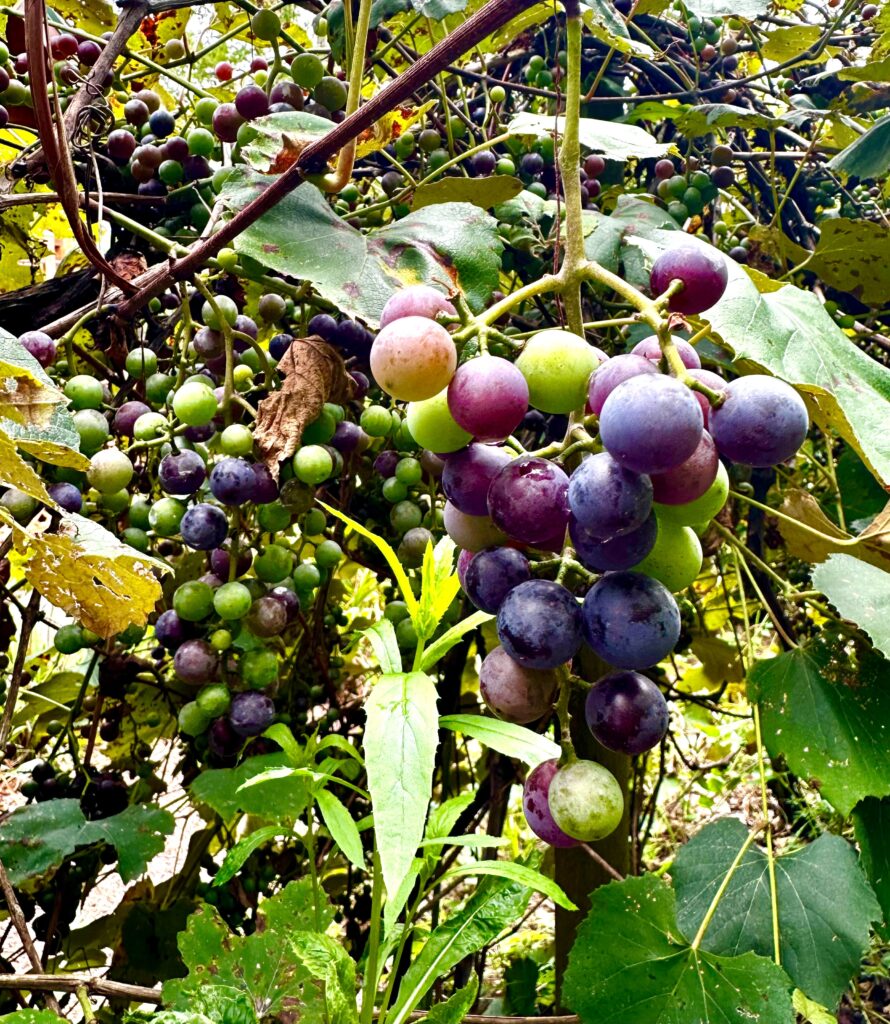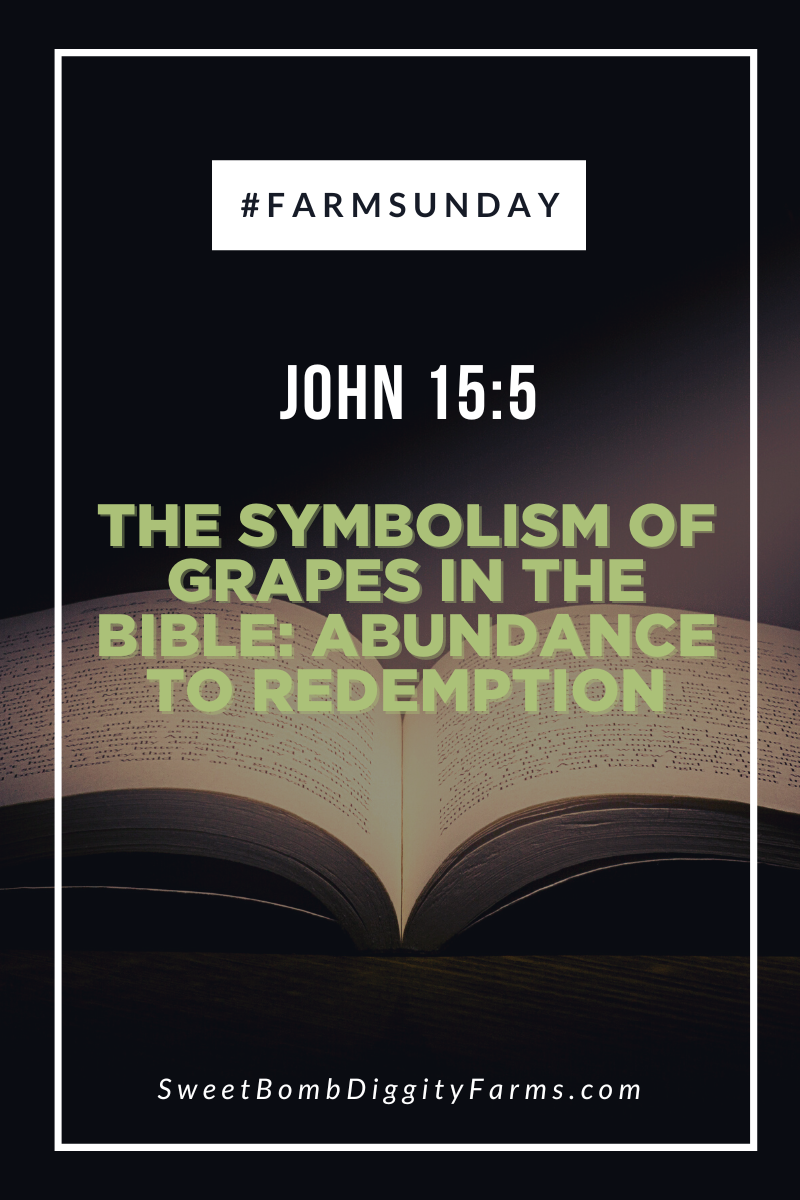SweetBombDiggity Farms! 🍇 As the golden sun of August shines down, our harvest of grapes is ripe and ready! In fact, Lane picked an entire wheel barrel full of them this week and there are still more on the vine.
Have you ever noticed how often grapes and vineyards appear in the Bible? Walking amongst our grapevines here at SweetBombDiggity Farms, I was reminded of John 15:5, where Jesus says, “I am the vine; you are the branches. If you remain in me and I in you, you will bear much fruit; apart from me you can do nothing.” It’s incredible to think of our relationship with Christ being as life-giving as the connection between our vines and their grapes.
Let’s journey back to the time of Moses, when spies were sent to explore the land of Canaan. They returned with a cluster of grapes so enormous that it took two men to carry it (Numbers 13:23-24). This wasn’t just a display of the land’s fertility; it was a promise of the abundance and prosperity that awaited the Israelites in the land God was giving them. Imagine a land so rich and promising that grapes grow in clusters too big for one man to carry!
But grapes aren’t just a symbol of physical abundance in the Bible. In Isaiah 5:1-7, Israel is likened to a vineyard that God planted with great care, expecting it to yield good grapes. Instead, it produced bad fruit, reflecting Israel’s disobedience and unfaithfulness. This theme is echoed in the words of Jesus, who identifies Himself as the true vine, with His followers as the branches, highlighting the essential connection needed to bear good and righteous fruit.
Now, let’s talk about a darker side of this symbol. Grapes, and more specifically, the winepress, are used in the Book of Revelation to portray God’s wrath and judgment (Revelation 14:18-20). This image is intense and vivid, painting a picture of the severity of God’s judgment.
But there is also hope and healing in this symbol, and it’s found in the person of Jesus Christ. At the Last Supper, Jesus took a cup of wine and told His disciples that it represented His blood, which would be poured out for the forgiveness of sins (Matthew 26:27-28). Here, wine, made from grapes, becomes an emblem of Jesus’ ultimate sacrifice and love. It’s the foundation of the new covenant between God and humanity.
This isn’t just about forgiveness, though. The blood of Christ, symbolized by the wine, is associated with healing on a deep, spiritual level. “By his wounds you have been healed,” says 1 Peter 2:24, highlighting the transformative and restorative power of Christ’s sacrifice.
When Christians partake in Communion, sipping the wine or grape juice is more than a ritual. It is a poignant reminder of Jesus’ love, His forgiveness of our sins, and the spiritual wholeness that His sacrifice grants us.
So the next time you read about grapes or vineyards in the Bible, or when you take Communion, remember the rich layers of meaning behind these symbols. They are a beautiful tapestry of God’s promise, judgment, love, and redemption—a story told through something as simple, yet as profound, as a cluster of grapes.
Hope your day is as blessed and fruitful as our harvest! 🙏 #harvestseason #faithandfarming


